 |
|

|
 |
TABLE of CONTENTS
|
Henkel testifies before U.S. House of Representatives committee |
By Mary McFarland Brooks
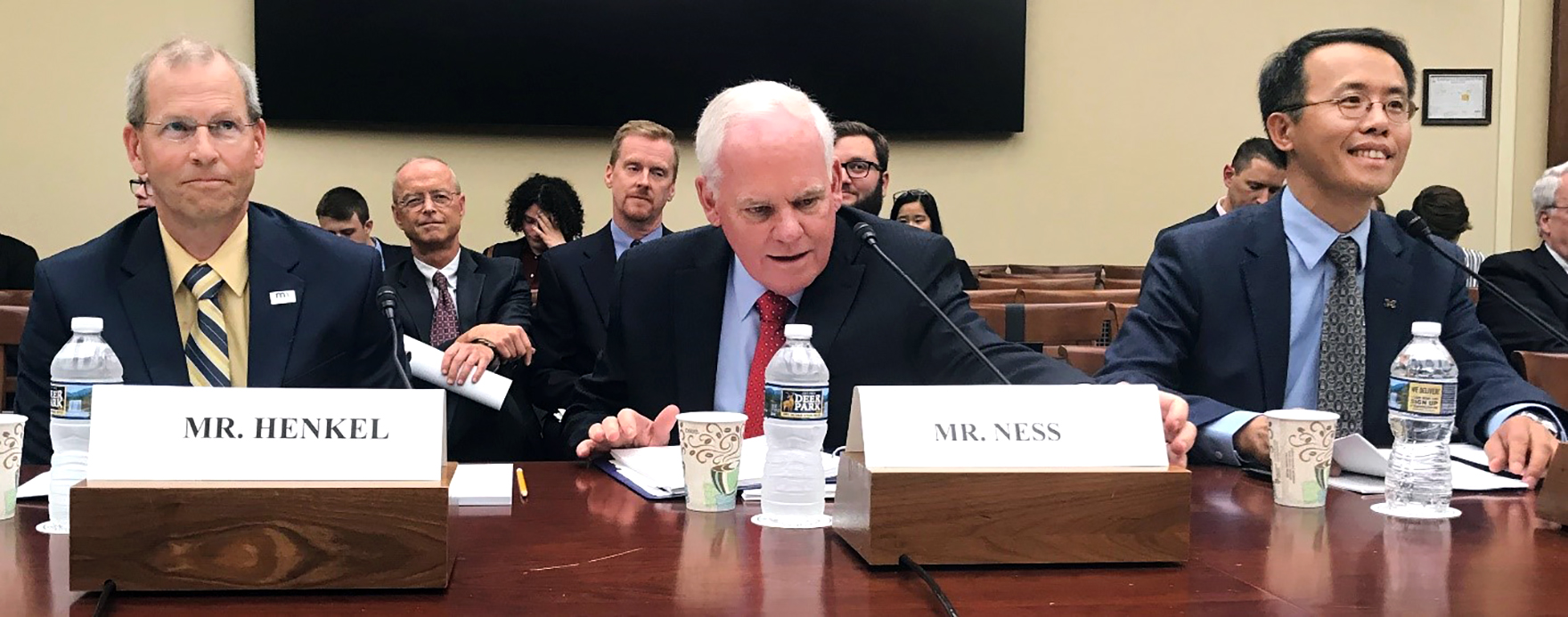
Testifying before the U.S. House of Representatives Committee on Science, Space, and Technology on July 11 were, from left, Tim Henkel, MnDOT’s assistant commissioner of Modal Planning and Program Management; Brian Ness, director of the Idaho Transportation Department; and Dr. Henry Liu, director of the Center for Connected and Automated Transportation. Photo by Will Lusk, American Association of State Highway and Transportation Officials |
Tim Henkel, assistant commissioner of Modal Planning and Program Management, testified July 11 before the U.S. House of Representatives Committee on Science, Space, and Technology.
He spoke about the findings of the Research and Technology Coordinating Committee's review of the Federal Highway Administration programs. Henkel served as the chair of the study committee.
His testimony called for greater levels of investment for the study of autonomous vehicle technology, energy and sustainability, growing and changing populations, resilience, movement of goods, safety and equity.
|
 |
|

|
 |
TABLE of CONTENTS
 |
Report: Congestion on Twin Cities metro freeways increases slightly as population grows |
By Nick Carpenter
Traffic congestion on freeways in the Twin Cities metropolitan area has increased slightly but remains below the 10-year projection for congestion, according to the 2018 Metropolitan Freeway System Congestion Report released July 15.
The report defines congestion as “traffic flowing at speeds less than or equal to 45 mph.”
The report shows the percentage of congested freeways increased from 23.2 percent in 2017 to 24.2 percent in 2018. Population projections for the seven-county metro area show an increase from 3.08 million in 2017 to 3.11 million in 2018, according to preliminary estimates from the Metropolitan Council.
“Congestion is affected by a number of things, including the local economy, road construction, transit ridership and population growth,” said Commissioner Margaret Anderson Kelliher. “As the Twin Cities grow and our roads continue to age and deteriorate, it’s imperative that we identify a long-term, dedicated funding solution to invest in transportation, improve our system’s efficiency and keep Minnesotans moving.”
The department recently completed several projects aimed at improving traffic flow in the Twin Cities metro area. It is currently working on and preparing for other congestion-alleviating projects. This work includes:
- I-35W in Minneapolis - Construction is in full swing on the four-year I-35W project between 43rd Street and 15th Street in Minneapolis. This includes adding MnPASS lanes, a transit station at Lake Street and additional access to the region. Work started in summer 2017 and will continue through fall 2021.
- I-35W in Roseville and Lino Lakes - Work is underway on I-35W between Hwy 36 in Roseville and Sunset Avenue in Lino Lakes. Construction includes adding MnPASS Express Lanes between County Road C in Roseville and Lexington Avenue/County Road 17 in Blaine.
- Hwy 169 and Hwy 41 in Scott County - This Scott County-led project includes the construction of a new diverging diamond interchange at Hwy 169 and Hwy 41 to improve safety and mobility by removing direct access to Hwy169.
View the complete 2018 Metropolitan Freeway System Congestion Report
|
 |
|

|
 |
TABLE of CONTENTS
 |
Project profile: Willmar Wye groundbreaking celebrates public-private partnership |
|
By Sandra Schlagel, District 8 public affairs coordinator
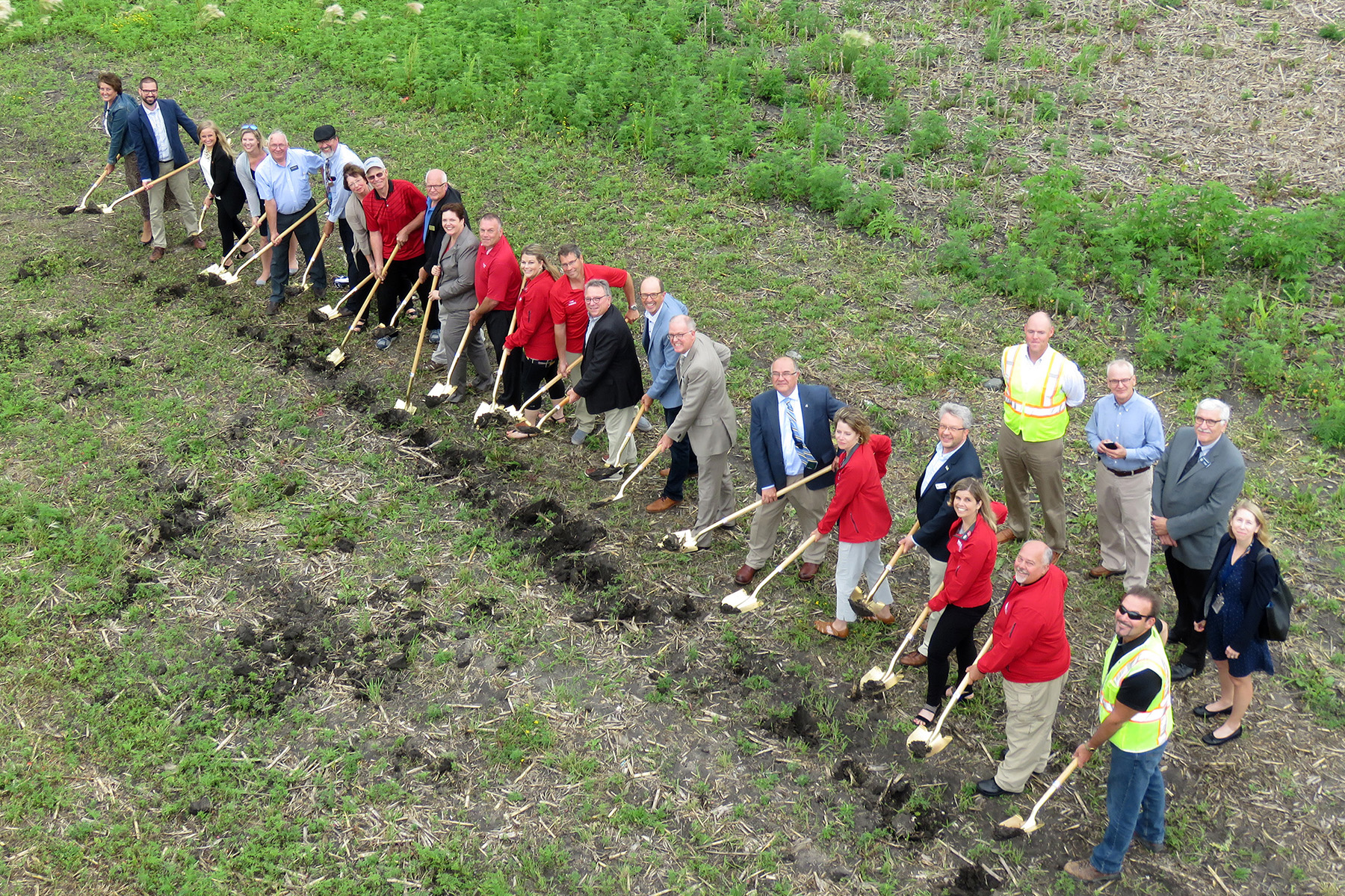
Two dozen representatives from federal, state, local and private partner organizations grabbed gold-painted shovels and symbolically broke ground on the Willmar Wye project July 9. Commissioner Margaret Anderson Kelliher is 10th from the left, District Engineer Jon Huseby is fourth from the right in the front row, and Senior Engineering Specialist Gene East is third from the right, second row. Photo by Mandi Lighthizer-Schmidt |
The partners of the Willmar Rail Connector & Industrial Access project hosted a groundbreaking ceremony July 9 at the former Willmar Municipal Airport site.
The project, also known as the Willmar Wye, is a public-private partnership between MnDOT, Kandiyohi County, the city of Willmar, Kandiyohi/Willmar Economic Development Commission and BNSF Railway. A new rail line built on the west side of Willmar will create a direct connection between the Marshall and Morris Subdivisions of the BNSF freight rail network. It will also provide freight rail access to Willmar’s industrial park.
“From the MnDOT perspective and the entire MnDOT team, we are excited about this project,” Commissioner Margaret Anderson Kelliher said during remarks at the celebration. “The public-private partnership of this is really a good example and a model of how we can move forward. It’s an important mode of transportation that often people don’t think about, but it’s moving a lot of tonnage across the state every day. And we want to be able to do that as safely as possible.”
Roadway construction got underway the week of the groundbreaking and will continue through fall 2021. The project includes the realignment of Hwy 12, the reconstruction of Hwy 40, two new bridges and two new roundabouts. Some of the project benefits include improved safety for travelers, reduced wait times for railroad crossings to clear, fewer trains and reduced noise in downtown Willmar.
Following the program, two dozen representatives from the public and private partner organizations grabbed gold-painted shovels and symbolically broke ground.
Visit the Willmar Wye project website to learn more.
|
 |
|

|
 |
TABLE of CONTENTS
 |
Project profile: I35W@94 project in Minneapolis rebuilds 50-year-old freeway |
|
By Dave Aeikens, Metro District public affairs
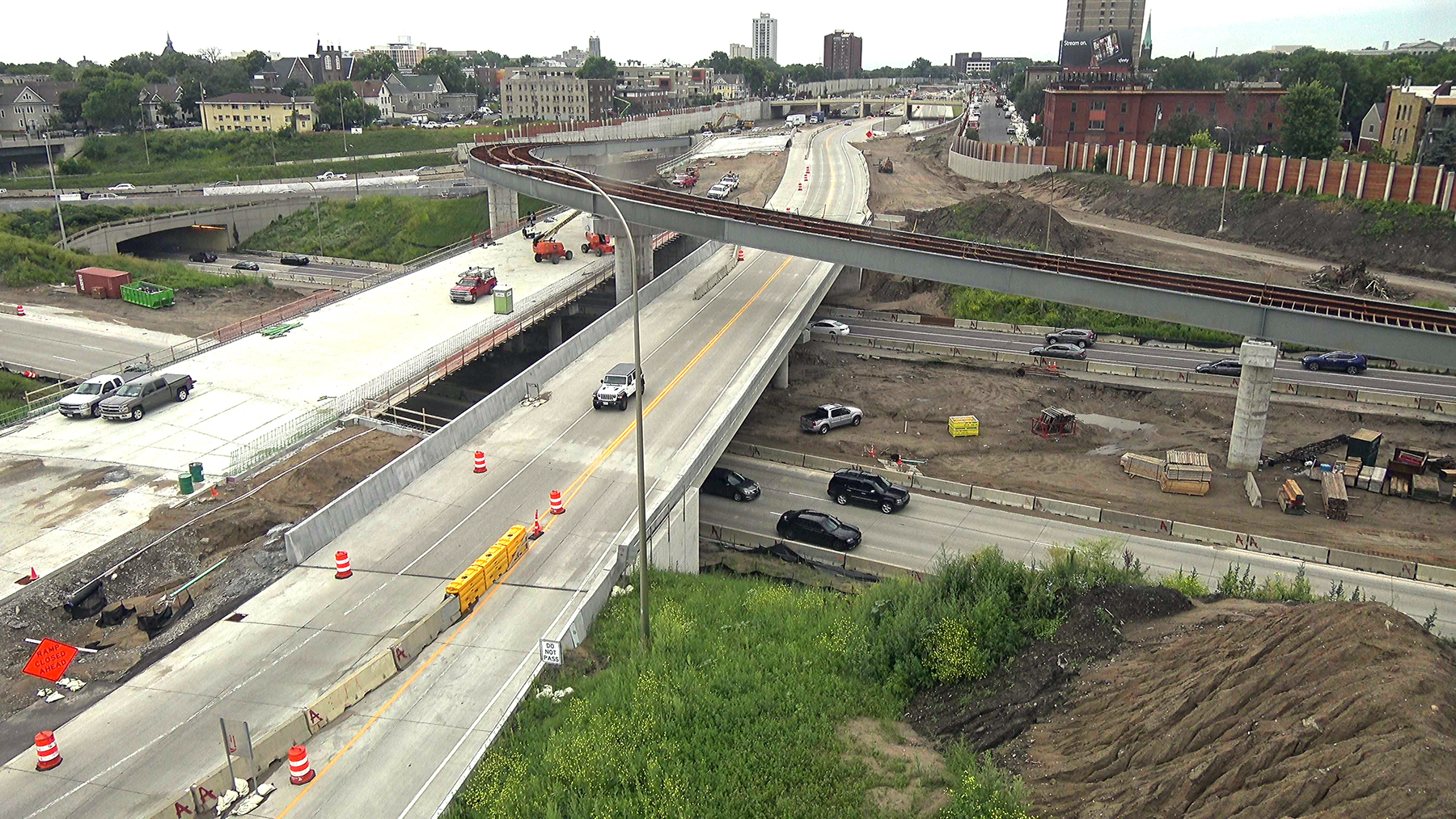
A view south toward I-35W shows progress as the I-35W north to I-94 west ramp takes shape and work continues on the bridge over I-94 that leads into downtown Minneapolis. Project photo |
Motorists who drive on Interstate 35W can see the progress.
New bridges are open at Franklin Avenue, 28th Street and 38th Street. Retaining walls and noise walls are taking shape. New concrete lanes are open going south. Ramps from I-35W north to I-94 west, the new connection from I-35W south to Lake Street, and the 24th Street and 40th Street pedestrian bridges are taking shape.
It’s all part of a $239 million reconstruction project between 43rd Street and I-94 south of downtown Minneapolis to rebuild the freeway and improve access. The reconstruction project of the 50-year-old freeway is a partnership between MnDOT, Hennepin County, the city of Minneapolis and Metro Transit. It includes new utilities and improvements for bikers and walkers.
Work started in 2017. The project recently passed the midway point and should be finished by October 2021.
“We have completed a lot of work,” said Steve Barrett, a resident engineer in the Golden Valley construction office who is leading the project for MnDOT. “We are on schedule. We still have work to do.”
Motorists have navigated the project with reduced lanes on I-35W north and I-35W south. In June, the project opened a third lane going south using newly built concrete. Next year, crews will rebuild the northbound lanes, build a ramp from I-35W north to 28th Street, and complete bridges and ramps currently in progress. Finally, crews will rebuild Lake Street and build a transit station on the center of I-35W at Lake Street.
“This is a major construction project on two busy freeways in a heavily populated area,” Barrett said. “There have been many challenges for our staff and contractors, but it has been an extremely fun project to work on.”
|
 |
|

|
 |
TABLE of CONTENTS
 |
New office, director aim to foster ‘culture of innovation’ |
By Micaela Resh, Office of Research & Innovation

Katie Walker. Submitted photo
Katie Walker recently returned to MnDOT to serve as the director of the new Office of Research & Innovation (formerly the Research Services & Library section). Prior to her 20-year tenure with Hennepin County, Walker served as a Metro Division principal transportation planner from 1996-99.
“Fostering a culture of innovation at MnDOT will involve supporting creative thinking, new ideas and customer-focused solutions,” Walker said. “We want to find ways to celebrate and share how staff are innovating on a daily basis. This not only supports our core values, but equips us to better respond to a changing transportation environment.” |
MnDOT's newly created Office of Research & Innovation formerly consisted of the MnDOT Library and research administration functions under the Office of Transportation System Management.
“There has been an emphasis on innovation at a federal level, both at the Federal Highway Administration and the American Association of State Highway and Transportation Officials,”said Jean Wallace, assistant division director of Modal Planning & Program Management. “Reflecting this at the state level provides us the channel to better showcase the innovative work being done here at MnDOT.”
Wallace spearheaded a research strategic plan that culminated in the organizational change.
The Office of Research & Innovation program staff administers approximately 190 research projects at any given time, ranging from local initiatives to pooled-fund projects with other states. Research program staff will also continue to work with the MnDOT Library to quickly provide relevant and cost-effective answers to the state’s transportation questions.
Other strategies recommended by the agency’s five-year Research Program Strategic Plan aim to improve how MnDOT conducts research and research implementation activities.
One example is the expansion of the membership and responsibilities of the state research program’s steering committee, previously known as the Transportation Research and Innovation Group. Historically charged with allocating state and federal transportation research funds, the steering committee will also now track and report on outcomes of research conducted across the agency.
In another change, MnDOT staff will be able to apply for research implementation funds any time throughout the year instead of through an annual solicitation. These funds can advance new technologies or practices based on the findings of past research. This change aims to increase the successful adoption of research findings within the department.
|
 |
|

|
 |
TABLE of CONTENTS
 |
Staffing updates: Harff, Gieseke accept new assignments |
By Joseph Palmersheim
Peter Harff
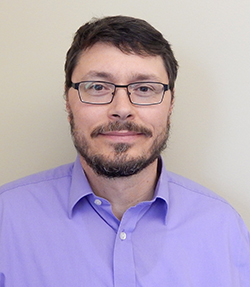
Peter Harff. File photo |
Peter Harff has accepted a four-month mobility assignment as the acting director of the Office of Project Management and Technical Support. Tom Styrbicki, the current director, is on a personal leave. Harff started July 16 and will continue his mobility until Nov. 8.
Harff has worked for the state of Minnesota for more than 19 years, starting out as a graduate engineer trainee and then working in various program delivery roles, primarily in District 7. He also served as the enterprise project management section team leader in the Office of Project Management and Technical Support in 2012-13.
“With his district program delivery experience, coupled with his time spent working in Office of Project Management and Technical Support, Peter is very familiar with the products and services provided by the OPMTS,” said Nancy Daubenberger, assistant commissioner, Engineering Services Division. “I look forward to the new leadership he will bring to their management team.”
Harff has bachelor’s degrees from the University of Minnesota in both geological engineering and geology. He also has a master’s in geology from the U of M. He is a Professional Engineer, and has been a Project Management Professional since 2011.
Mark Gieseke
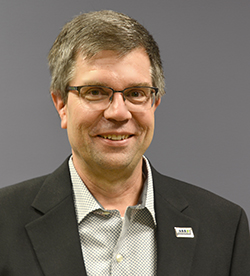
Mark Gieseke. File photo |
Mark Gieseke recently accepted a temporary assignment to take on the role of State Aid and Statewide Radio Communications assistant commissioner behind Mitch Rasmussen, who recently retired. His appointment started July 10 and lasts until a permanent replacement is found.
Gieseke has worked for the state of Minnesota for over 35 years. He has worked in a variety of positions, including preliminary design, final design, soils and various roles in State Aid. His most recent role was the assistant division director for the Engineering Services Division.
He has a bachelor’s degree in civil engineering from South Dakota State University and an MBA from the University of Phoenix.
|
 |
|

|
 |
TABLE of CONTENTS
 |
Civil Engineering Internship Program training day gives participants a variety of experiences |

Participants (interns unless noted otherwise) in an inclusive walk audit July 17 included, from left, Brandon Anderson, MnDOT Public Engagement Analyst Kjensmo Walker, Hussein Jaber, Savannah Kaul, Chinou Vue, Sarina Men (back row: Rachel Middlestead, See Xiong, Amber Thompson). Organizational Planning & Management Director Nicole Westadt is in the far back. Photo by Lorianna Yang |
By Lorianna Yang, Civil Engineering Internship Program
MnDOT’s Civil Engineering Internship Program participated in a variety of activities during a training day on July 17.
During a Generations Training, interns learned about biases that can harm intergenerational relationships. They also discussed strategies to mitigate barriers in the workplace.
Interns learned about the history of the Lowry Hill Tunnel and its relationship to the Lowry Hill neighborhood during a tour of the local landmark. They also got a close-up view of the fresh-air ventilation fans and air shafts that bring surface air into the tunnel's driving lanes. Finally, they also saw the control room where carbon monoxide monitors sample the tunnel air for quality purposes.
The interns also used low-vision goggles and manual wheelchairs during an inclusive walk audit to evaluate ADA accessibility along Rice Street, north of MnDOT’s Central Office in St Paul.
“It was interesting to see how small changes of sidewalk grade or the alignment of truncated domes could have a huge impact on some people’s use of city streets,” said intern Josh Comstock. “When using the visual impairment goggles, I was able to understand the importance of the proper alignment of the truncated domes with intersection crosswalks. The goggles also made it apparent that verbal crossing signals are helpful for safely crossing streets.”
Intern Rachel Middlestead said she would recommend the ADA training module to other MnDOT staff.
“You gain experience in seeing how the numbers from ADA codes, such as maximum cross slope, apply to the real world,” she said. “Sidewalks may be up to code, but they can still be hard to traverse for people who use a wheelchair or other people with a disability.”
Learn more about the Civil Engineering Internship Program.
Contact Kjensmo Walker for more information about the inclusive walk audit.
|
 |
|

|
 |
TABLE of CONTENTS
 |
'Big Boy' locomotive visits Minnesota |
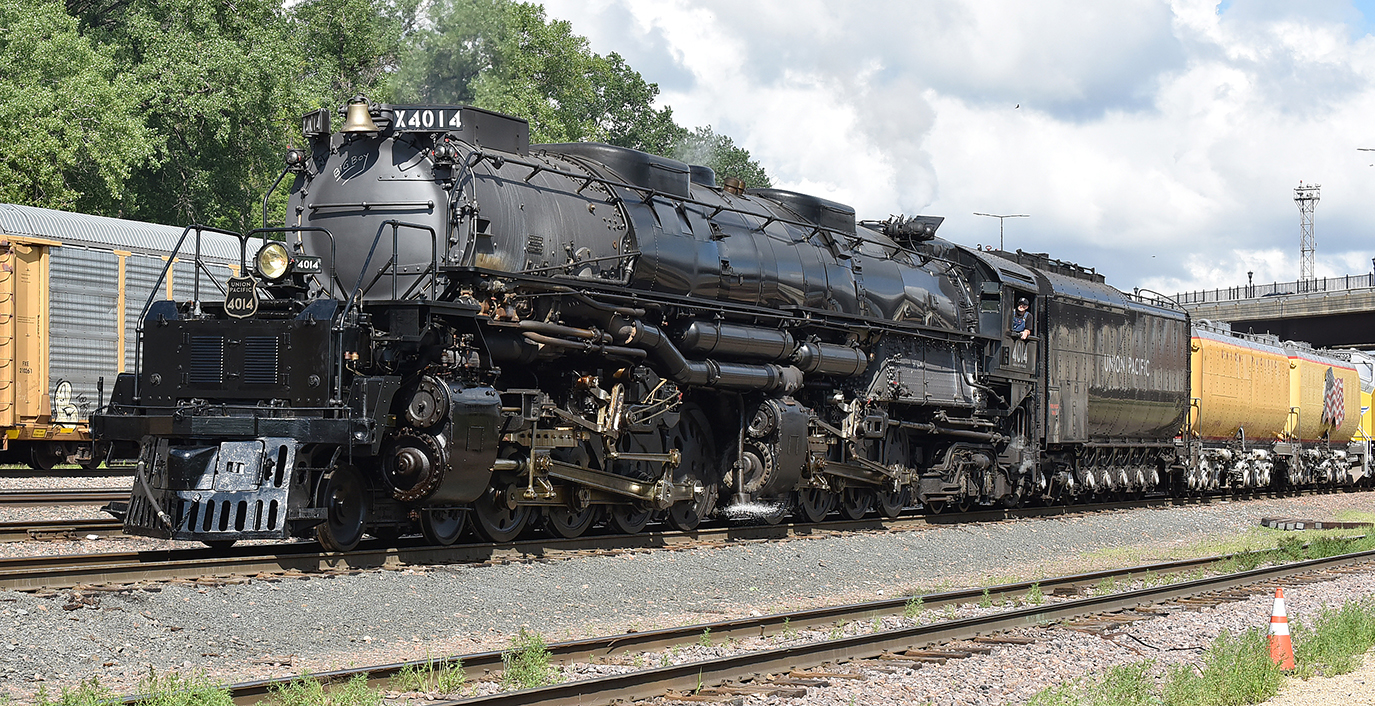
Union Pacific’s 1941-era Big Boy steam locomotive UP4014 stopped July 18 at Union Depot in St. Paul to commemorate the transcontinental railroad's 150th anniversary. The locomotive, which also visited Duluth, was designed to haul 3,300-ton freight trains at sustained speeds of 60 mph and surmount the Wasatch Range in Utah without assistance. Locomotive technology continues to advance. Passenger trains around the world today operate at speeds approaching 200 mph in regular service. Although passenger rail service at these speeds is only practical in select locations in the U.S., MnDOT’s passenger rail program is committed to developing a network of high-performance intercity passenger train service connecting the Twin Cities to major outlying regional centers and to the Midwest Regional Rail system focused on Chicago. Photo by Rich Kemp
|
|
 |
|

|
 |
TABLE of CONTENTS
 |
On the Job: Peter Wasko works with noise monitoring, mitigation |
By Mary McFarland Brooks
Peter Wasko is chief of the Modeling and Testing Unit. In his 20 years with the agency, he's had a front-row seat to technological changes that have affected how his unit does business, moving from paper to digital platforms for project work.
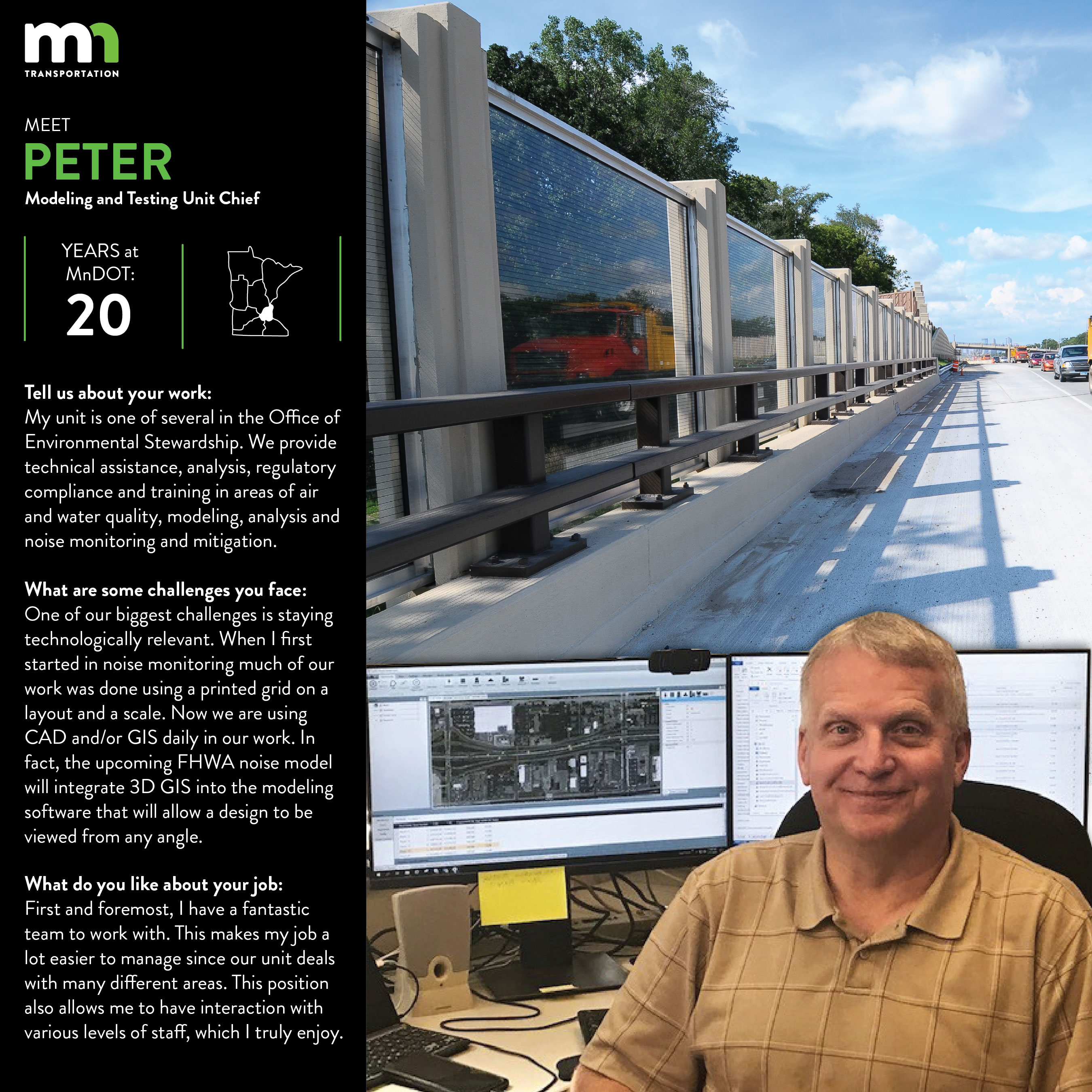
Recent employee profiles:
|
| |
|
| |
|



